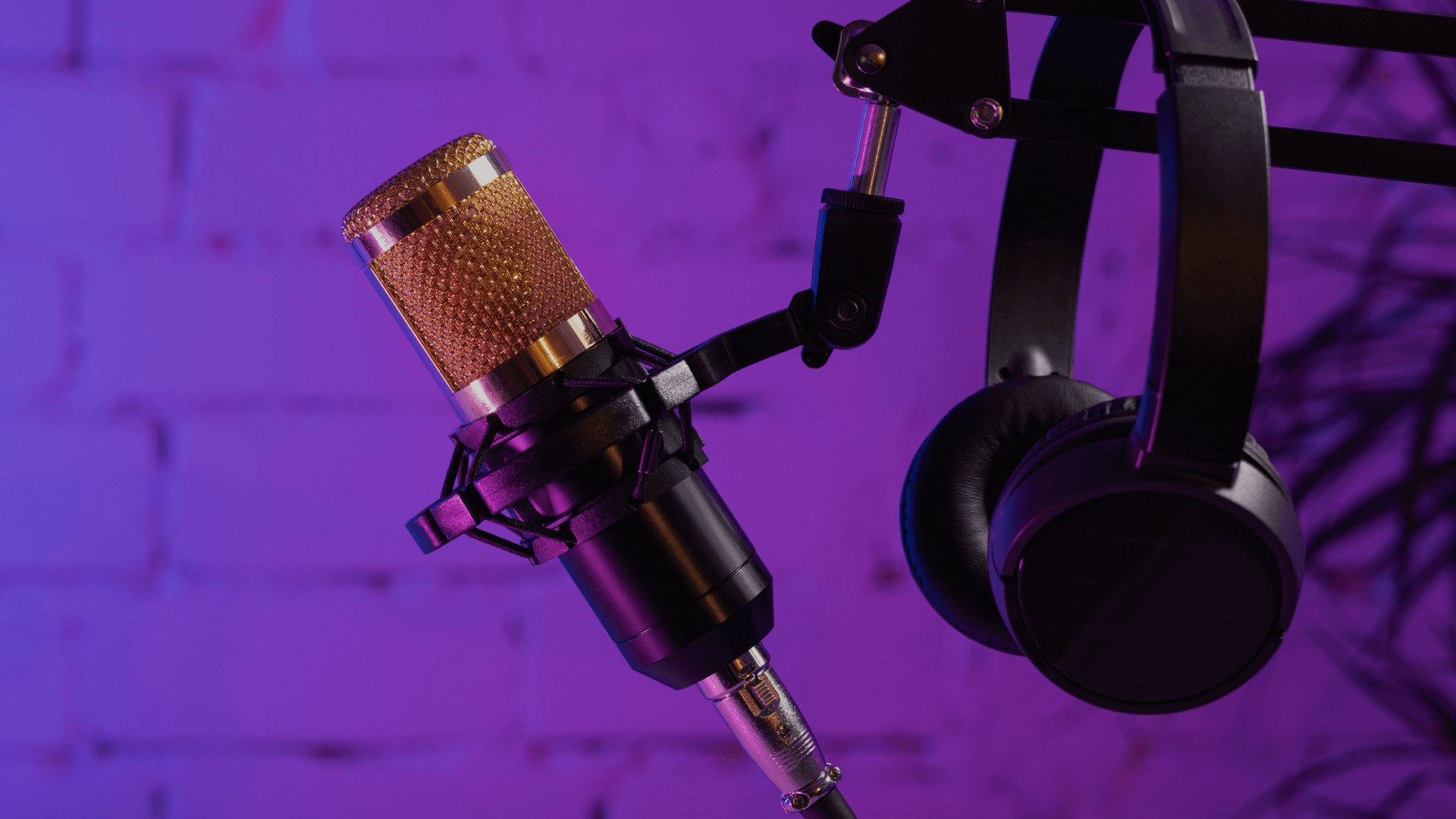Tips for a successful company podcast

6 tips for successful business podcasts
1. Market research
Every successful project starts with an in-depth analysis of the current status to determine which of your competitors are already present with their own podcast. After all, their goal is to develop a podcast format that doesn't exist yet. Be inspired by examples of best practice and stay open to current trends — not just in your industry.
2. Strategy & concept
Avoid having to start planning immediately. First, ask yourself the questions: Would we like to conduct interviews or would you rather moderate a panel discussion? Who could be an interesting guest? What technical equipment do we need?
It is crucial to take a bird's eye view at the beginning and to be aware of the following points:
- Challenges within the company or in your area
- Goals to be achieved with the podcast
- Target groups that are to be reached
- Why your audience should listen to your podcast
- What added value does your podcast offer
- What is your unique selling point (USP)
This automatically results in decisions regarding format, topics, release date and frequency, the structure of a season and individual episodes, and how you want to communicate the podcast. Your findings from market research are also incorporated here to develop an unmistakable USP.
At this stage, you should also set your budget framework. Keep in mind that interview and talk formats can often be produced more cost-effectively than documentation or reports.
Ideally, you will end up with a concept paper that is broken down into a specific project plan that includes the launch date, responsibilities and milestones. A final SWOT analysis helps to clarify the opportunities and risks of the podcast project.

3rd podcast setup
The strategy is in place and implementation can start soon. Now it's about the hardware and software needed to produce and publish the podcast.
Select one first hosting provider, which helps create the RSS feed and allows you to connect to relevant podcast platforms such as Spotify & Co. Distribution on these platforms is also carried out by your hosting provider.
What equipment and tools are needed for podcast production?
- hardware: An affordable starter kit with USB microphone and headphones starts at around 100 EUR. Depending on the recording situation, however, this quickly reaches its technical limits. With a budget of around 1,000 EUR, consisting of a recording device and two professional microphones, you'll quickly become a podcast professional.
- softwares for recording during remote productions: While free solutions like Zoom or Teams are good to get you started, it's better to use higher quality solutions specifically designed for podcast recordings, such as Riverside or Audacity.
- People who can operate the technology: As a rule, these are audio producers who often also take on post-production.
If you choose a professional speaker or presenter, you should factor in their fees. A more cost-effective alternative is talented moderators from our own ranks, who receive moderation coaching when required.
After the first recordings, the individual sound design (music, sound effects, etc.) is created, for which you need usage rights. Providers with extensive libraries such as PremiumBeat can be helpful here.
The last part of the preparation mainly involves graphic and editorial work in order to promote the podcast and create recognition value. This includes:
- A podcast cover and episode cover
- A landing page with a built-in podcast player (via your video hosting provider)
- Social media assets
- A marketing plan for promoting the podcast
4. Production and post-production
Most of the time is needed to prepare and carry out production. Production tasks include:
- guest management (during interviews)
- Preparation of scripts and interview guidelines
- Booking a recording location or a recording studio
- Equipment logistics
- Coordinating team availability and project management
- Possible trip planning
For larger productions, up to 10 people (project manager, audio producer, videographer, content manager, editor, etc.) can be involved in the production — without the protagonists.
It is advisable to produce multiple episodes in one day or in one run to save travel expenses for additional production days.
Post-production is usually done by audio producers who take care of editing, mixing and mastering. Speech errors, repetitions and background noises are corrected, the volume is adjusted, etc. This ensures optimal sound quality, ideally even during production to minimize post-production effort.
For smaller productions, you can also take action yourself, using tools such as Audacity offer a good free entry-level solution. Advanced users often use Adobe Audition with extensive editing options. However, it's a good idea to outsource post-production to save time and focus on core business.

5th distribution
During distribution, the final audio file is prepared for publication. You can get these as an mp3 from the audio producer and all you have to do is upload them to your podcast hosting platform and determine on which channels you want to play your audio content.
3Q offers an all-in-one solution for highly scaled multi-platform publishing of audio and video content — on demand and as live streaming.
Maybe you'd even like to monetize your content? 3Q has integrated an audio ad server with Adswizz so that you can tap into a new revenue stream with your audio content.
And since data protection is extremely important, it is an advantage to choose a German hosting provider with servers in Europe that writes contracts in German and is fully compliant with GDPR.
6. Marketing
The success of your podcast depends largely on the application. After all, you want to stand out from the crowd and attract as many listeners as possible to your format. It is about deepening, expanding and preparing podcast content for specific channels. The audio tracks, images and videos recorded during production can be further processed and used on social media, in press releases or as classic advertising. The more channels you use, the more you can expand the reach of your podcast.
We hope this post has given you a better insight into podcast production and distribution.
We'd love to hear from you!
Newsletter
Abonnieren Sie unseren monatlichen Newsletter, um immer auf dem Laufenden zu bleiben!


%202.png)